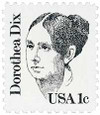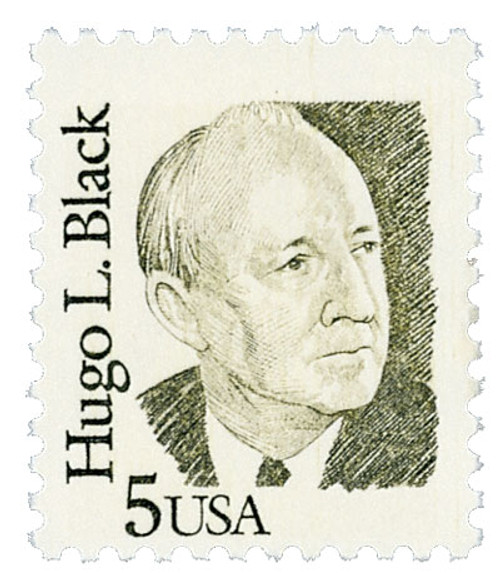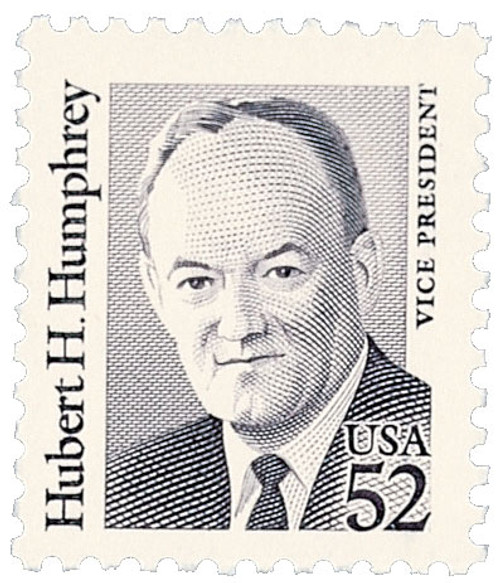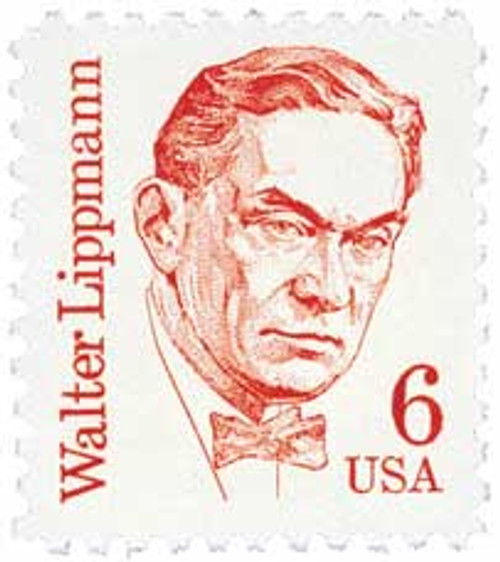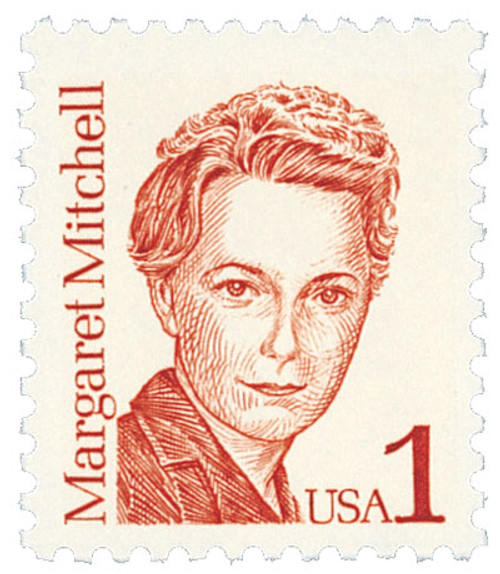
# 1844 - 1983 1c Great Americans: Dorothea Dix
U.S. #1844
1983 1¢ Dorothea Dix
Great Americans
- 13th stamp in Great Americans Series
- First definitive printed on the multi-color “A” press
- Honors Civil War superintendent of Army Nurses and mental health crusader Dorothea Dix
Stamp Category: Definitive
Series: Great Americans
Value: 1¢; used predominantly as a “change maker”
First Day of Issue: September 23, 1983
First Day City: Hampden, Maine
Quantity Issued: 200,000,000
Printed by: Bureau of Engraving and Printing
Printing Method: Engraved
Format: Panes of 100
Perforations: 11
Color: Black
Why the stamp was issued: To provide a 1¢ sheet stamp for the Great Americans Series. With this stamp’s issue, it was the first time since the Famous Americans of 1940 that the US had two 1¢ stamps issued within five weeks of each other. The other stamp was the Omnibus coil stamp issued 35 days earlier as part of the Transportation Series.
The most common use for this stamp was as a “change maker.” As Don McDowell of the Stamps Division pointed out, “When a small post office without a meter machine quotes a parcel post rate of $1.86 to a customer, they’d better have the ‘change maker’ stamps on hand to hit it exactly.” These low denominations were also useful in the event of a rate change.
About the stamp design: Bernie Fuchs illustrated this stamp, basing his portrait on an 1846 photograph of Dix by an unknown photographer. The original photograph was provided by the National Portrait Gallery in Washington, DC.
About the printing process: This was the first definitive stamp produced specifically for the “A” combination gravure-intaglio press, which printed multi-color stamps with floating plate numbers. As such, it was the first definitive stamp since the creation of the USPS in 1971 to be produced on a press other than the single-color Cottrell press. It was also the first with floating plate numbers.
First Day City: The First Day ceremony for this stamp was held at the Hampden Academy in Dix’s hometown of Hamden, Maine.
Unusual fact about this stamp: Error varieties exist imperforate and imperforate between (with perforations on the outer edges of the stamps).
About the Great Americans Series: The Great Americans Series was created to replace the Americana Series. The new series would be characterized by a standard definitive size, simple design, and monochromatic colors.
This simple design included a portrait, “USA,” the denomination, the person’s name, and in some cases, their occupation or reason for recognition. The first stamp in the new series was issued on December 27, 1980. It honored Sequoyah and fulfilled the new international postcard rate that would go into effect in January 1981.
The Great Americans Series would honor a wider range of people than the previous Prominent Americans and Liberty Series. While those series mainly honored presidents and politicians, the Great Americans Series featured people from many fields and ethnicities. They were individuals who were leaders in education, the military, literature, the arts, and human and civil rights. Plus, while the previous series only honored a few women, the Great Americans featured 15 women. This was also the first definitive series to honor Native Americans, with five stamps.
The Bureau of Engraving and Printing (BEP) produced most of the stamps, but private firms printed some. Several stamps saw multiple printings. The result was many different varieties, with tagging being the key to understanding them. Though there were also differences in perforations, gum, paper, and ink color.
The final stamp in the series was issued on July 17, 1999, honoring Justin S. Morrill. Spanning 20 years, the Great Americans was the longest-running US definitive series. It was also the largest series of face-different stamps, with a total of 63.
Click here for all the individual stamps and click here for the complete series.
History the stamp represents: Dorothea Lynde Dix was born on April 4, 1802, in Hampden, Maine. She spent much of her life improving and establishing new mental asylums. Dix also served as the superintendent of Army Nurses during the Civil War.
Dix was the oldest of three children. Her mother was ill and her father drank heavily, so when she was 12, she and her siblings went to live with her grandmother in Boston. By the time she was 14, Dix was teaching at an all-girls school in Worcester where she promoted ethical habits and taught natural sciences. Dix then opened her own school in Boston around 1821 where she taught the children of wealthy families. She also taught poor children in her grandmother’s barn.
Dix suffered from depression and developed health issues that forced her to stop teaching. She spent six years writing books. Among these was Conversations on Common Things, which was reprinted 60 times by 1869. Dix also wrote one of the first flower dictionaries in the US. She returned to teaching in Boston from 1831 to 1836, but suffered from a breakdown and was encouraged to go to Europe to find relief. While there, she visited institutions and met social reformers that inspired her to rally for the care of the mentally ill.
When she returned to the US in 1840, Dix launched an investigation into the care of the mentally ill throughout Massachusetts. She found conditions to be terrible, especially at the East Cambridge prison, where she also taught female prisoners. They didn’t receive the medications they needed and found mentally ill people in dark, bare cells and others locked up with dangerous criminals. In her resulting report, to the state legislature, Dix described people “in cages, stalls, pens! Chained, naked, beaten with rods, and lashed into obedience!” The legislature was moved by her report and subsequently passed a bill to improve the state mental hospital in Worcester.
Dix then set out to improve conditions around the country. Starting in New Jersey, then moving on to New Hampshire, Louisiana, Illinois, North Carolina, and Pennsylvania, she campaigned to improve existing mental institutions and establish new ones. In the 1850s, she proposed a land bill that would set aside millions of acres of federal land for the mentally ill. The bill passed both houses of Congress but President Franklin Pierce vetoed it because he felt social welfare should be up to the states. Dix then returned to Europe and continued her mission in Scotland, France, and Italy.
Beating out Dr. Elizabeth Blackwell for the position, Dorothea Dix was appointed to serve as the Union’s superintendent of Army Nurses in 1861. Dix set strict guidelines. Candidates had to be age 35-50, plain, and wear drab dresses. Jewelry and makeup were also forbidden in an attempt to shield them from exploitation from male doctors and patients. Dix feuded with nurses, doctors, and bureaucrats, but her non-partisan care for all wounded soldiers won her fans in the North and South. After Lee’s retreat from Gettysburg, “Dix nurses” cared for over 5,000 injured Confederates. The task called for Dix’s steely nature and organizational skills. Julia Susan Wheelock, one of Dix’s nurses, said “Though enemies, they were nevertheless helpless, suffering human beings.”
After the war, Dix continued her crusade, and also worked to improve the care of the disabled and prisoners. In 1881, she moved into the New Jersey State Hospital that she had founded years earlier. She spent the rest of her life there, continuing to correspond with people from around the world until her death on July 17, 1887. Over the course of her crusade, Dix founded 32 mental institutions and improved more than 100 others. Several institutions and wards were named in her honor as well as a crater on Venus and World War II transport ship.
U.S. #1844
1983 1¢ Dorothea Dix
Great Americans
- 13th stamp in Great Americans Series
- First definitive printed on the multi-color “A” press
- Honors Civil War superintendent of Army Nurses and mental health crusader Dorothea Dix
Stamp Category: Definitive
Series: Great Americans
Value: 1¢; used predominantly as a “change maker”
First Day of Issue: September 23, 1983
First Day City: Hampden, Maine
Quantity Issued: 200,000,000
Printed by: Bureau of Engraving and Printing
Printing Method: Engraved
Format: Panes of 100
Perforations: 11
Color: Black
Why the stamp was issued: To provide a 1¢ sheet stamp for the Great Americans Series. With this stamp’s issue, it was the first time since the Famous Americans of 1940 that the US had two 1¢ stamps issued within five weeks of each other. The other stamp was the Omnibus coil stamp issued 35 days earlier as part of the Transportation Series.
The most common use for this stamp was as a “change maker.” As Don McDowell of the Stamps Division pointed out, “When a small post office without a meter machine quotes a parcel post rate of $1.86 to a customer, they’d better have the ‘change maker’ stamps on hand to hit it exactly.” These low denominations were also useful in the event of a rate change.
About the stamp design: Bernie Fuchs illustrated this stamp, basing his portrait on an 1846 photograph of Dix by an unknown photographer. The original photograph was provided by the National Portrait Gallery in Washington, DC.
About the printing process: This was the first definitive stamp produced specifically for the “A” combination gravure-intaglio press, which printed multi-color stamps with floating plate numbers. As such, it was the first definitive stamp since the creation of the USPS in 1971 to be produced on a press other than the single-color Cottrell press. It was also the first with floating plate numbers.
First Day City: The First Day ceremony for this stamp was held at the Hampden Academy in Dix’s hometown of Hamden, Maine.
Unusual fact about this stamp: Error varieties exist imperforate and imperforate between (with perforations on the outer edges of the stamps).
About the Great Americans Series: The Great Americans Series was created to replace the Americana Series. The new series would be characterized by a standard definitive size, simple design, and monochromatic colors.
This simple design included a portrait, “USA,” the denomination, the person’s name, and in some cases, their occupation or reason for recognition. The first stamp in the new series was issued on December 27, 1980. It honored Sequoyah and fulfilled the new international postcard rate that would go into effect in January 1981.
The Great Americans Series would honor a wider range of people than the previous Prominent Americans and Liberty Series. While those series mainly honored presidents and politicians, the Great Americans Series featured people from many fields and ethnicities. They were individuals who were leaders in education, the military, literature, the arts, and human and civil rights. Plus, while the previous series only honored a few women, the Great Americans featured 15 women. This was also the first definitive series to honor Native Americans, with five stamps.
The Bureau of Engraving and Printing (BEP) produced most of the stamps, but private firms printed some. Several stamps saw multiple printings. The result was many different varieties, with tagging being the key to understanding them. Though there were also differences in perforations, gum, paper, and ink color.
The final stamp in the series was issued on July 17, 1999, honoring Justin S. Morrill. Spanning 20 years, the Great Americans was the longest-running US definitive series. It was also the largest series of face-different stamps, with a total of 63.
Click here for all the individual stamps and click here for the complete series.
History the stamp represents: Dorothea Lynde Dix was born on April 4, 1802, in Hampden, Maine. She spent much of her life improving and establishing new mental asylums. Dix also served as the superintendent of Army Nurses during the Civil War.
Dix was the oldest of three children. Her mother was ill and her father drank heavily, so when she was 12, she and her siblings went to live with her grandmother in Boston. By the time she was 14, Dix was teaching at an all-girls school in Worcester where she promoted ethical habits and taught natural sciences. Dix then opened her own school in Boston around 1821 where she taught the children of wealthy families. She also taught poor children in her grandmother’s barn.
Dix suffered from depression and developed health issues that forced her to stop teaching. She spent six years writing books. Among these was Conversations on Common Things, which was reprinted 60 times by 1869. Dix also wrote one of the first flower dictionaries in the US. She returned to teaching in Boston from 1831 to 1836, but suffered from a breakdown and was encouraged to go to Europe to find relief. While there, she visited institutions and met social reformers that inspired her to rally for the care of the mentally ill.
When she returned to the US in 1840, Dix launched an investigation into the care of the mentally ill throughout Massachusetts. She found conditions to be terrible, especially at the East Cambridge prison, where she also taught female prisoners. They didn’t receive the medications they needed and found mentally ill people in dark, bare cells and others locked up with dangerous criminals. In her resulting report, to the state legislature, Dix described people “in cages, stalls, pens! Chained, naked, beaten with rods, and lashed into obedience!” The legislature was moved by her report and subsequently passed a bill to improve the state mental hospital in Worcester.
Dix then set out to improve conditions around the country. Starting in New Jersey, then moving on to New Hampshire, Louisiana, Illinois, North Carolina, and Pennsylvania, she campaigned to improve existing mental institutions and establish new ones. In the 1850s, she proposed a land bill that would set aside millions of acres of federal land for the mentally ill. The bill passed both houses of Congress but President Franklin Pierce vetoed it because he felt social welfare should be up to the states. Dix then returned to Europe and continued her mission in Scotland, France, and Italy.
Beating out Dr. Elizabeth Blackwell for the position, Dorothea Dix was appointed to serve as the Union’s superintendent of Army Nurses in 1861. Dix set strict guidelines. Candidates had to be age 35-50, plain, and wear drab dresses. Jewelry and makeup were also forbidden in an attempt to shield them from exploitation from male doctors and patients. Dix feuded with nurses, doctors, and bureaucrats, but her non-partisan care for all wounded soldiers won her fans in the North and South. After Lee’s retreat from Gettysburg, “Dix nurses” cared for over 5,000 injured Confederates. The task called for Dix’s steely nature and organizational skills. Julia Susan Wheelock, one of Dix’s nurses, said “Though enemies, they were nevertheless helpless, suffering human beings.”
After the war, Dix continued her crusade, and also worked to improve the care of the disabled and prisoners. In 1881, she moved into the New Jersey State Hospital that she had founded years earlier. She spent the rest of her life there, continuing to correspond with people from around the world until her death on July 17, 1887. Over the course of her crusade, Dix founded 32 mental institutions and improved more than 100 others. Several institutions and wards were named in her honor as well as a crater on Venus and World War II transport ship.







